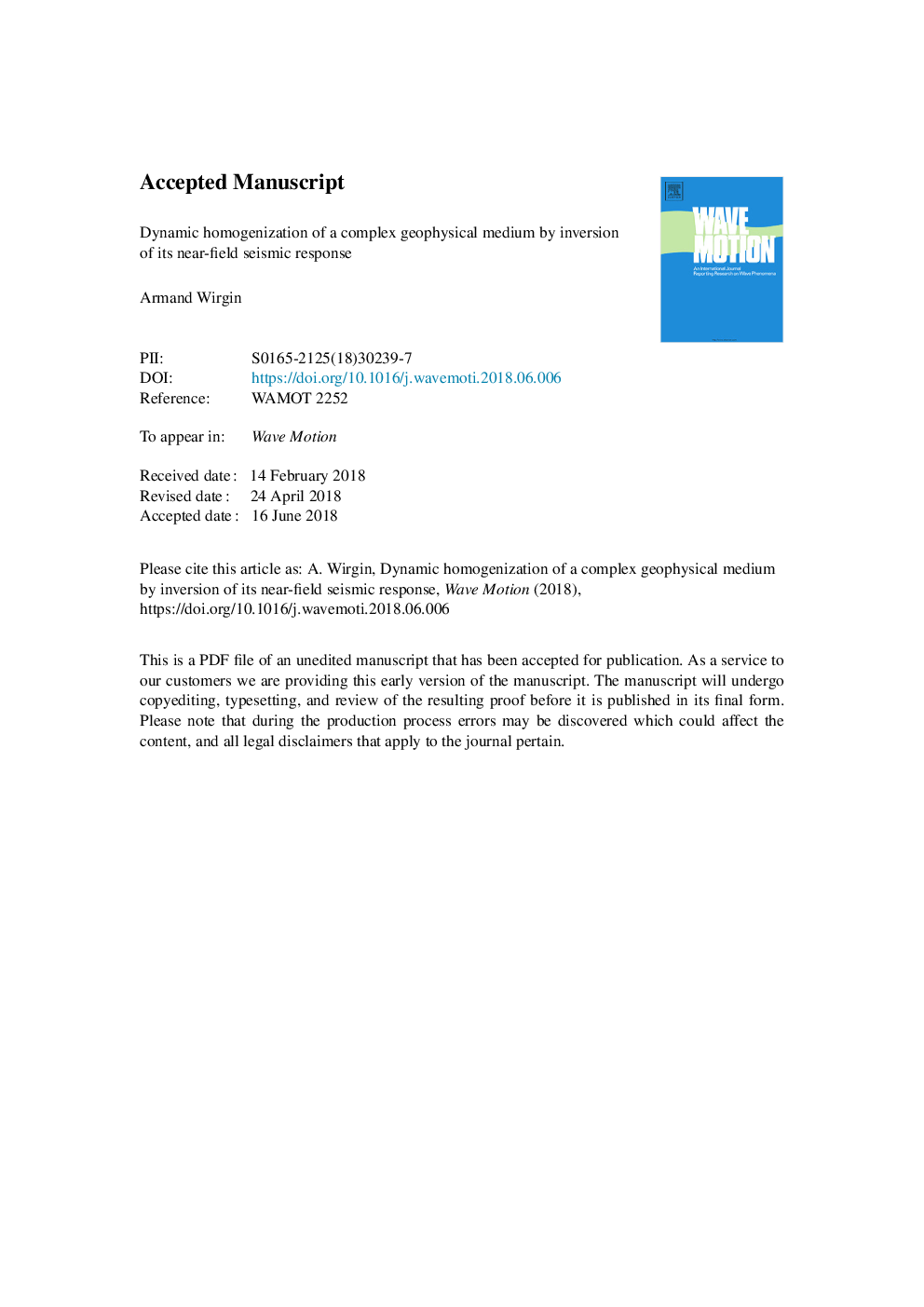| کد مقاله | کد نشریه | سال انتشار | مقاله انگلیسی | نسخه تمام متن |
|---|---|---|---|---|
| 8256743 | 1534250 | 2018 | 45 صفحه PDF | دانلود رایگان |
عنوان انگلیسی مقاله ISI
Dynamic homogenization of a complex geophysical medium by inversion of its near-field seismic response
ترجمه فارسی عنوان
همگن سازی دینامیکی یک محیط ژئوفیزیکی پیچیده با چرخش پاسخ لرزه ای آن در نزدیکی میدان
دانلود مقاله + سفارش ترجمه
دانلود مقاله ISI انگلیسی
رایگان برای ایرانیان
کلمات کلیدی
همگن سازی پویا، شهرستانها پاسخ لرزه ای، مشکل معکوس برای همگن شدن لایه، میدان نزدیک فرکانس پایین، حالت رزمی رزونانس،
موضوعات مرتبط
مهندسی و علوم پایه
علوم زمین و سیارات
زمین شناسی
چکیده انگلیسی
The present study originated in the forward problem of the prediction of the effects of seismic waves (generated by impulsive deep-down sources) in urban areas. The traditional, numerically-intensive approaches to this problem have not, until now, given rise to simple theoretical paradigms which might explain how and why the (often-destructive) response of cities is conditioned by factors such as the city density, building average height, average building composition, site geometry and composition, and characteristics of the solicitation such as incident angles, polarization and frequency. We propose to homogenize the city in order to simplify, and make possible the understanding of, the site-city-solicitation interaction. This homogenization is treated as an inverse problem, i.e., by which we: (1) generate near-field response data for a 'real' city, (2) replace (initially by thought) the city by a homogeneous (surrogate) layer above, and in firm contact, with the underlying site, (3) compute the response of the surrogate layer/site response for various trial constitutive properties, (4) search for the global minimum of the discrepancy between the response data and the various trial parameter responses (5) attribute the homogenized properties of the city to the surrogate layer for which the minimum of the discrepancy is attained. We carry out this five-step procedure for a host of 'real' city and solicitation parameters, notably the frequency. The result is that: (i) for low frequencies and/or large city densities, the effective constitutive properties are their static equivalents, i.e., the effective shear modulus is the product of a factor related to the city density with the shear modulus of a generic substructure of the city and the effective complex velocity is equal to the complex velocity of the said generic substructure, (2) at higher frequencies and/or smaller city densities, the effective constitutive properties are dispersive and do not take on a simple mathematical form, with this dispersion compensating for the discordance between the ways the inhomogeneous city structure and the homogeneous surrogate layer respond to the seismic wave. For typical seismic solicitation frequencies, the city, represented as a layer with static homogenized properties, is quite adequate to account for the principal features of the response (notably those of the time-domain response). The model of the layer with dispersive homogenized properties is more suitable to account for such features as resonances due to the excitation of surface wave modes.
ناشر
Database: Elsevier - ScienceDirect (ساینس دایرکت)
Journal: Wave Motion - Volume 81, September 2018, Pages 46-69
Journal: Wave Motion - Volume 81, September 2018, Pages 46-69
نویسندگان
Armand Wirgin,
